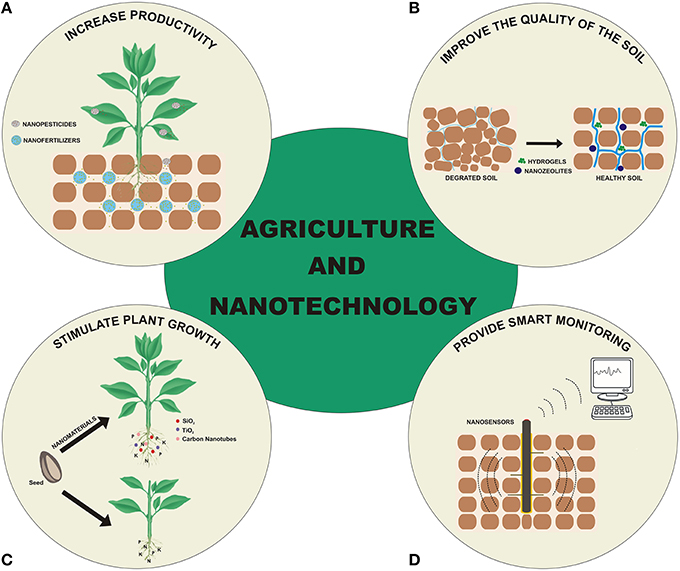Week 8: Nanotechnology + Art
 |
| Example of the use of nanotech in agriculture |
This week we learned about nanotechnology, which refers to the manipulation of the individual atoms and molecules of various things. The idea of nanotechnology emerged from a lecture given by a physicist named Richard Feynman. While the concept was new and had no name, Feynman really began the discussion of experimenting and controlling the smallest unit of life. The exploration of nanotechnology has become so popular because of its implications on various aspects of life. Conventional rules that bound the physical world do not necessarily apply in the same way when working with nanoscale particles. On the nanoscale, certain materials become lighter, stronger, and have better chemical reactivity. This revolutionary discovery has lead to new developments in art, technology, medicine, food, and so much more.
 |
| Stained glass that contains nanoparticles |
While the practice of nanotechnology is fairly recent, nanoparticles have always existed and have been utilized for centuries. Hundreds of years ago, artists used different sizes of gold and silver particles to create the unique colors and patterns of the stained glass windows in churches. This practice was widely used, but there was no knowledge of the process behind it. The Lycurgus Cup, which is now housed in the British Museum, also contains nanosized gold that causes it to radiate a red glow when lit from inside the cup, but it appears to be green during daylight.
The most fascinating thing I learned this week that relates to art is the discovery of the quantum dots. Quantum dots are nanocrystals made from semiconductor materials that can be manipulated depending on their chemical and physical properties. They are essentially artificial atoms and can be applied and used for just about anything. The energy and size in quantum dots have a lot to do with the color of light that it will emit and the same material can emit different colors. Smaller dots will make blue and bigger dots make red, but it can also exhibit other colors. In real life, this technology can be applied to makeup as the brand L’oreal is trying to do. They are researching into whether they can formulate pigment from quantum dots to replace the chemicals in their makeup products. This excites and intrigues me because as a makeup consumer, I would love to see all products without harsh chemicals. I am amazed to see that nanotechnology can enhance the properties of makeup.
This has been my favorite week so far because the use of nanotechnology is limitless and can be the catalyst that will bring us into the future we envision.
 |
| Quantum dots of 6nm diameter that emit different colors |
Online, UC, director. YouTube. YouTube, YouTube, 21 May 2012, www.youtube.com/watch?v=X0HCNiU_108.
Online, UC, director. YouTube. YouTube, YouTube, 21 May 2012, www.youtube.com/watch?v=yHCuZetAIhk.
“Quantum Dots.” Sigma, www.sigmaaldrich.com/technical-documents/articles/materials-science/nanomaterials/quantum-dots.html.
“What Is Nanotechnology?” Nano, www.nano.gov/nanotech-101/what/definition.
Woodford, Chris. “Quantum Dots: Introduction to Their Science and Applications.” Explain That Stuff, 28 July 2018, www.explainthatstuff.com/quantum-dots.html.

Hi Harriet! You did a great job on this blog! I really liked that you had that introductory paragraph in the beginning, it definetly gives the whole concept context, even after having read the material. You obviously did a lot of external research, especially regarding the quantum dots. I found this really interesting and a strong connection to art from this field of science and technology.
ReplyDelete